DIS sends every core course on long study tours, in addition to core course week. Click core course week if you’re curious what that was like! I’ll do a separate post on the academic side of our visits, because it’s lengthy and fairly nuanced in nature. Basically the whole week was a freaking trek, my feet have never hurt so badly, AND a few of us took a trip to Prague afterward. It was insane, but worth every moment. I got the chance to further get to know the wonderful people in my section, and my favorite thing about us is that we’re all SO different but we still somehow fit together, and it’s really awesome to be able to sit next to someone different and have a completely different kind of conversation. So much love for MPP Section C.
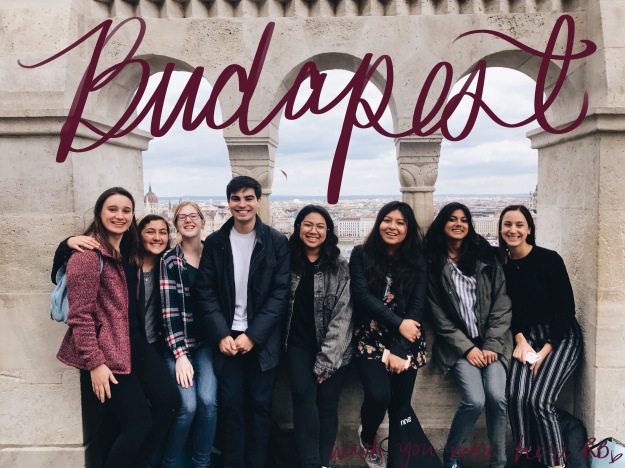
Fisherman’s Bastion
If you didn’t know, Budapest is separated by the Danube into two sides: Buda and Pest. It used to be three different cities, Buda, Obuda, and Pest, but has since come together. Pest is the flat side of the city, where most of the touristy stuff is and the “downtown” area resides. Buda is hilly and mostly residential, but still absurdly beautiful. We stayed on the Pest side, which is where most tourists stayed. DIS threw in a walking tour and a visit to the Szechenyi Baths for us.
The walking tour was a little odd because it was very niche and focused on the historic Jewish quarter, but it was still pretty cool as I had seen the city before. After a three hour walking tour, we went to the Gellert Baths, which are indoor baths on the Buda side situated on the same hill the Citadella sits on. Some people wanted to bathe and I suggested the others who didn’t climb to the Citadella.
Gellert is different from Szechenyi because it’s indoor and modeled like a cathedral. It’s beautiful and nostalgic, it feels like you’ve been transported to an ancient place. I would highly recommend it, maybe even over Szechenyi even though I’ve been to those twice.
We had a free 6 hours to see ALLL the sights and sounds on our last day. It was a whirlwind, but so satisfying. We climbed to the Buda Castle, grabbed to go pizza and sat in the square facing the Fisherman’s Bastion and the Matthias Church. I felt so much content in that moment, I really could’ve sat there all day.
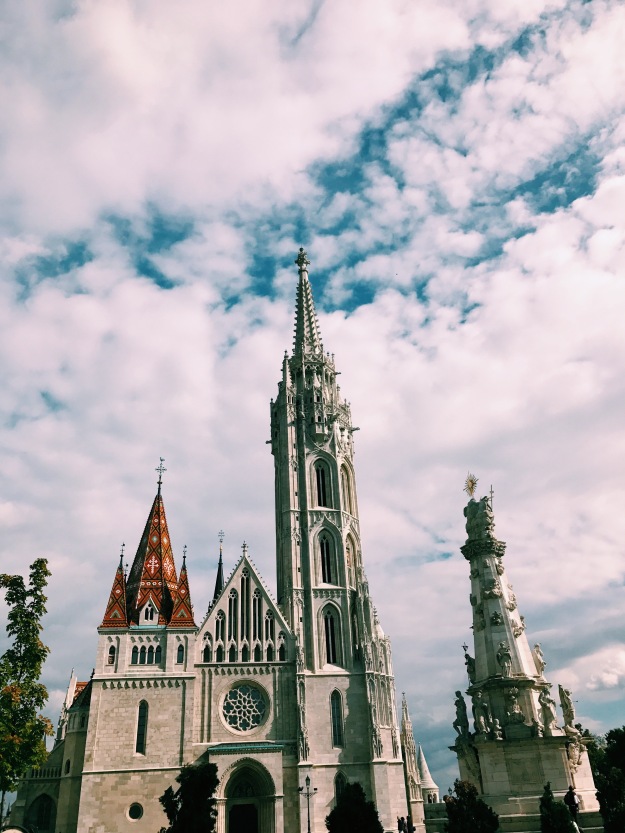
Church of Matthias
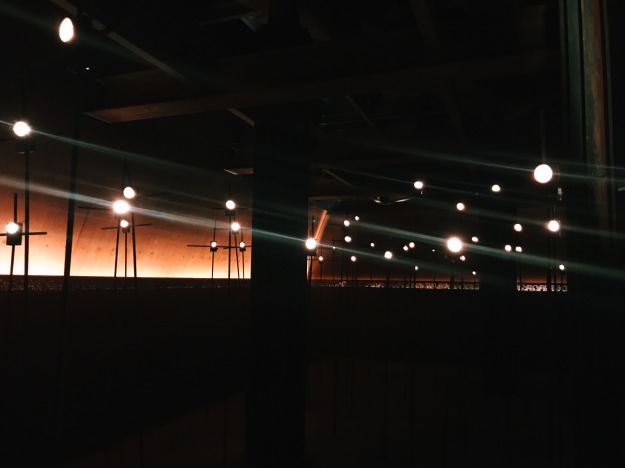
House of Terror
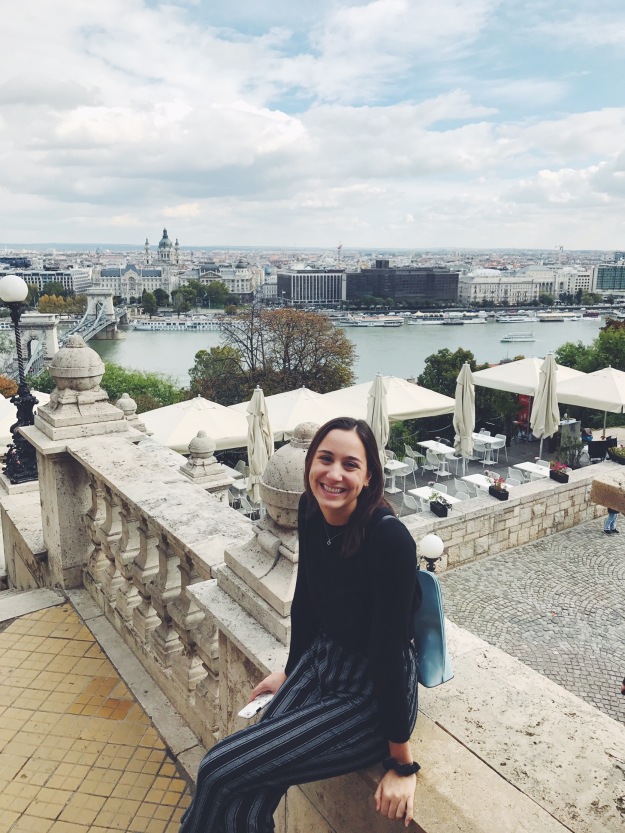
View from the Buda Castle
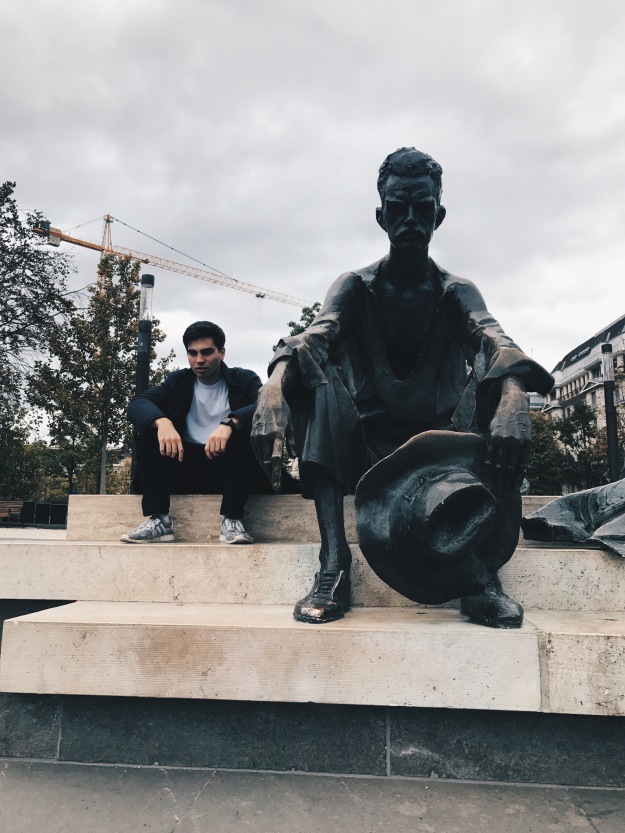
Alex mocking a statue
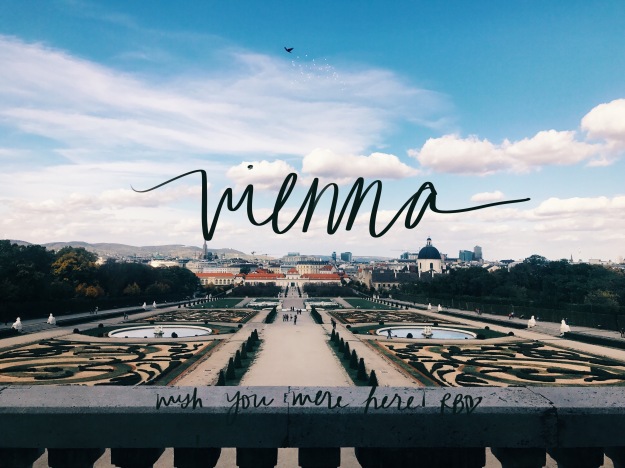
Belvedere
This is even reflected in the interactions we had: we were told to partake in their “cafe culture” which meant sitting in a lavish cafe and eating cake. It made us feel fairly out of place and was pretty expensive.
We had a chocolate cake that was the original “sachre torte”, which wasn’t what we were expecting because it had apricot in it.
We had a wine tasting on DIS, which was promptly followed by an aimless walk around the city center at night, where I got to know the girls I was going to Prague with a little more.
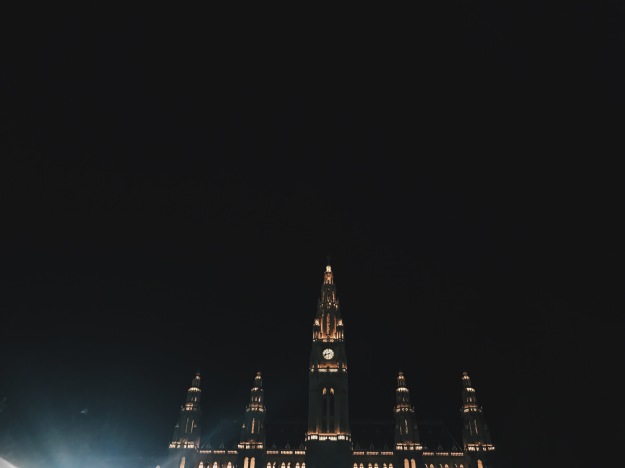
The Radhus – “town hall” being ruined by the lights shining from some random video game convention going on in front.
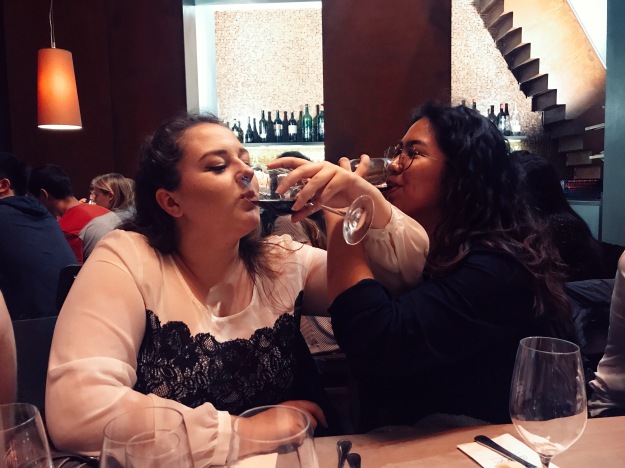
Meghan – amateur sommelier
My favorite thing about doing these two cities together is that they are so close to each other, but are so different. This is in due part to the fact that Hungary was under Soviet Occupation for many years, but I think the cities are a great combination. Budapest will forever have a place in my heart for it’s authenticity but also the memories that I’ve made there with both of the groups of people I went with. Vienna will too, even though it’s view of the Danube isn’t as great. I think I will return there when I’m old and enjoy fancy cake more. A group of my friends and I continued on to Prague, which will be a separate post because it was magical.
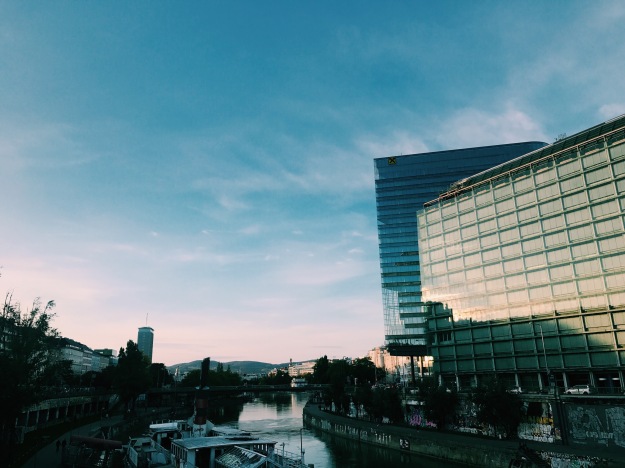
The Danube in Vienna, we could’ve just picked a bad spot. 😉
Wish you were here,
Rigel


























